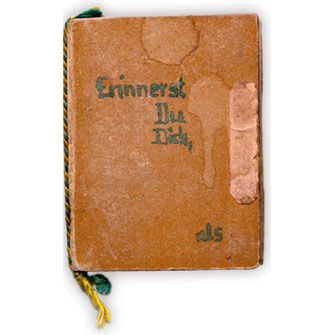Module 2: Gender and Sexuality
Case Study: Gad Beck

Here we focus in on Gerhard “Gad” Beck, a survivor who testified extensively to his experience as a gay man and as a Jewish man during and after the war. Gad spoke explicitly about his dual experience when many did not, never denying his gay or Jewish identity. His testimony of going underground and creating a network of aid for other Jews using his identity as both a Jew and a gay man exemplifies an experience for which there is little documentation; this is because so many Jewish LGBTQ+ voices were silenced by Nazi persecution. Gad Beck sits at a unique intersection of identity and experience; through him we learn about the tension between being gay and Jewish under Nazi rule, being a mischlinge—Nazi terminology for someone who was partially Jewish—and how these multiple identities impacted him and those around him.
Guest Lecture by Dr. Klaus Mueller
In this clip, Dr. Klaus Mueller describes the importance of further examining how people lived their lives who were persecuted under multiple identity categories by the Nazi regime, such as Jewish homosexuals. Dr. Mueller presents Gad Beck as a crucial example of one of these voices.

Oral History: Gad Beck
In his oral history, Gad Beck describes his relationship with Manfred Lewin and his attempt to save Lewin from being deported.

For a Look or A Touch
For a Look or A Touch introduces the audience to the Holocaust experience of homosexuals and presents the consequences of Nazi persecution on the lives of Gad Beck and Manfred Lewin and their relationship. The composer, Jake Heggie, came across the documentary Paragraph 175 while conducting research at the United States Holocaust Memorial Museum. Shortly after, he approached the librettist, songwriter, and lyricist Gene Scheer in the hope to produce an opera based on the material he had seen in the archives. Moved by the booklet created by Manfred for Gad, Scheer created the text of the opera based on this artefact and the oral histories in Paragraph 175.
While you watch the following segment of the opera presented by the Boston Gay Men’s Chorus, reflect on the role of archival material and oral history in the production of cultural production. This clip shows the Gad Beck and Manfred Lewin characters speaking to their story as reflected in Gad Beck’s testimony. In the background, the members of the chorus stand dressed in black uniforms with pink triangles on their breasts.
Boston Gay Men’s Chorus. Minutes: 31:44-33:28
Reflection questions:
- Why is Gad Beck such an important case study for the study of LGBTQ+ Holocaust history?
- What is so significant about the diary? What insights does the diary provide for understanding this history?

